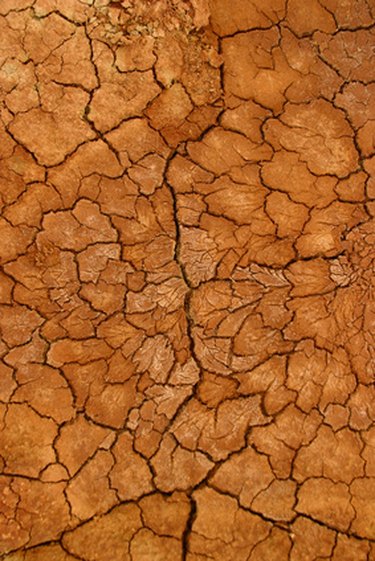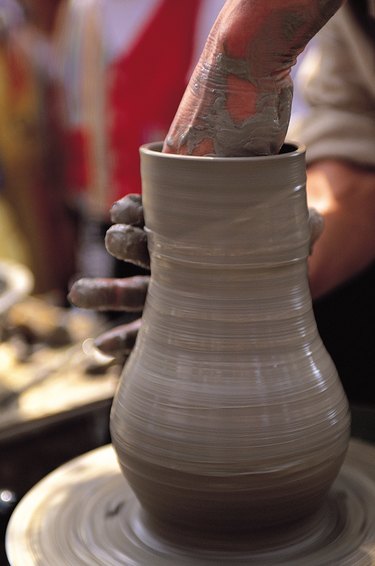
Clay soil has several uses for around the home, the art studio and even the science lab. The soil content is well suited for several species of trees and shrubs that thrive on the nutrient-rich top layers of the clay, while moist, compacted portions of the soil have played a key role in ceramics and pottery for thousands of years. Additionally science has begun to look at the elements within clay soil as doctors and scientists look at clay as more than a holistic remedy for illnesses but perhaps a real effective disease fighter.
Tree Planting
Video of the Day

Clay soil is well tolerated by tree populations with some species actually preferring the soil variety over sand or loam grades. According to bachmans.com, willow, aspen, cottonwood, Ohio buckeye, hawthorn and three species of ash grow best in well-ventilated, moist clay soil.
Video of the Day
Medicinal

Minerals found in clay soil have been used in folk medicine to relieve an upset stomach and prevent wound infection. According to a 2008 study published in the Journal of Antimicrobial Chemotherapy, clay minerals rich in iron were effective at fighting antibiotic-resistant strains of pathogenic bacteria in a lab setting. The study concluded that specific clay soil minerals have antibacterial properties that could produce an inexpensive means of fighting infection in humans.
Pottery

One of the more popular uses of clay soil is in ceramics and pottery. The soil is easily combined with water and worked into a thick mass that is well suited for sculpting. Clay must be kept in a dark, moist environment in order to keep from drying out and to retain its ability to be molded into different shapes. The molded clay is then fired in an oven to remove the moisture from the pot. This process takes several hours to complete, as the clay must be heated slowly in order to keep moisture from evaporating too quickly and causing cracks in the pottery.